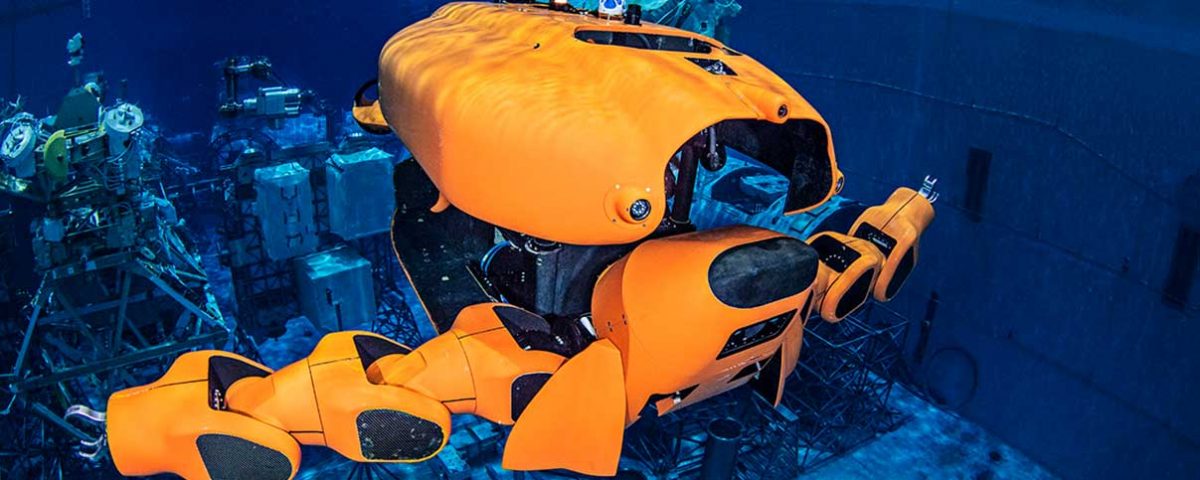Autonomous maritime vehicles
Autonomous maritime vehicles

There are mainly two types of autonomous maritime vehicles.
1)Autonomous surface vehicles (ASV)
2)Unmanned underwater vehicles (UUV)
Autonomous surface vehicles (ASV):
Maritime autonomous surface ships(MASS):
Also known as Autonomous cargo ships are crewless vessels that transport either container or bulk cargo over navigable waters with little or no human interaction. Different methods and levels of autonomy can be achieved through monitoring and remote control from a nearby manned ship, an onshore control center or through artificial intelligence and machine learning, letting the vessel itself decide the course of action. The Maritime safety Committee at the International Maritime Organization (IMO) has proposed a preliminary definition of autonomous ships as Maritime Autonomous Surface Ships (MASS) which includes the degrees of autonomy a ship can operate independently of human interaction:
- Degree one: Ship with automated processes and decision support: Seafarers are on board to operate and control shipboard systems and functions. Some operations may be automated and at times be unsupervised but with seafarers on board ready to take control.
- Degree two: Remotely controlled ship with seafarers on board: The ship is controlled and operated from another location. Seafarers are available on board to take control and to operate the shipboard systems and functions.
- Degree three: Remotely controlled ship without seafarers on board: The ship is controlled and operated from another location. There are no seafarers on board.
Degree four: Fully autonomous ship: The operating system of the ship is able to make decisions and determine actions by itself.
Potential benefits include:
- Operational safety: According to a study in 2018, it was reported that between 75 % and 96 % of maritime-related accidents were caused by human error. Working on deck during mooring is estimated to be 5 to 16 times more dangerous than jobs onshore. By introducing fully autonomous and semi-autonomous ships, it will reduce the number and severity of these accidents due to both a lack of crew on-board and the better performance that autonomous systems deliver.
- Cost Reduction: With crew costs typically accounting for around 20–30% of the total cost for a cargo ship’s journey. Semi-autonomous or fully autonomous ships can potentially reduce and eliminate these costs, creating an incentive for shipping companies who strive for cost reduction in an increasingly competitive market.
- Energy efficiency and environmental impact: The removal of human crews would allow the construction of ships without ship facilities needed for human operation. This would allow autonomous ships to be built lighter and use less of its size for the crew, reducing fuel consumption and environmental impact.
- Piracy: Low-tech piracy activities aimed towards ships and their crews will reduce as a result of ships becoming autonomous.
Some of the challenges include:
- Reliability: The maintenance of ships moving parts will be difficult with no crew on board. Increasing redundancy is seen as the solution, either by having two engine systems or by using different propulsion methods that contain fewer moving parts
- Regulation: International regulation is seen as one of the biggest challenges facing autonomous ships. Rule 5 in the International Regulations for Preventing Collisions at Sea (COLREG) requires there to be a lookout present in order to avoid collisions and the International Convention for the Safety of Life at Sea (SOLAS) require ships to be able to assist in search and rescue operations, such as picking up survivors in case of a shipwreck. Without any human on-board autonomous vessels, it will be a difficult task to comply with these regulations.
- Cyber security: Cyber-attacks have become an increased threat in maritime shipping, where hackers have managed to compromise systems such as AIS, using cheap jammers to spoof GPS signals and hacking into the servers of container terminals in order to get shipping manifests. The maritime industry has been criticized for not being able to keep up with technological innovation, lagging 10–20 years behind other industries and leaving computer networks insecure and open for intrusion by organized crime and state actors.
- Safety concerns over implementation: Autonomous ships might improve safety by reducing human errors in the long run, but during a long transition phase to autonomous ships, these will operate alongside ships steered by humans.
- Liability and legal issues: If an accident would occur with an autonomous ship, finding out who would be liable creates a difficult challenge, as several parties such as the company, the software provider, hardware provider or the onshore monitoring stations might be at fault.
Wave Gliders:
The Wave Glider is composed of two parts: the ‘’float’’, roughly the size and shape of a large surfboard, travels on the surface of the ocean; the ‘’sub’’ or wing rack hangs below on an umbilical tether 13–26 feet long and is equipped with a rudder for steering and a thruster for additional thrust during extreme conditions. The Wave Glider leverages the difference in motion between the ocean surface and the calmer water below to create forward propulsion. No fuel is required for operation which enables it to stay at sea for long durations.
Wave Gliders are used for defense, maritime surveillance, commercial, oil and gas, and science and research applications. Examples include:
- Commercial/Oil and Gas – atmospheric, seismic, and environmental monitoring
- Defense – Anti-submarine warfare and Intelligence, Surveillance and Recognizance
- Maritime Surveillance – surface vessel detection for coastal and border security
Scientific research – weather monitoring, climate change, deep-sea seismic detection,
Unmanned underwater vehicles (UUV):Unmanned underwater vehicles (UUV), sometimes known as underwater drones, are any submersible vehicles that are able to operate underwater without a human occupant.
There are mainly two types of UUVs :
1)Remotely operated underwater vehicles (ROUV)
2)Autonomous underwater vehicle (AUV)
Remotely operated underwater vehicles:A remotely operated underwater vehicle (technically ROUV but commonly just ROV) is a tethered underwater mobile device.ROVs are unoccupied, usually highly maneuverable, and operated by a crew either aboard a vessel/floating platform or on proximate land. They are linked to a host ship by a neutrally buoyant tether or, often when working in rough conditions or in deeper water, a load-carrying umbilical cable is used along with a tether management system (TMS).
They are common in deepwater industries such as offshore hydrocarbon extraction.ROV operations in conjunction with simultaneous diving operations are under the overall supervision of the diving supervisor for safety reasons.They are used by several navies for decades, primarily for minehunting and minebreaking. ROVs are also used extensively by the scientific community to study the ocean. A number of deep sea animals and plants have been discovered or studied in their natural environment through the use of ROVs
Autonomous underwater vehicle (AUV)
An autonomous underwater vehicle (AUV) is a robot that travels underwater without requiring input from an operator. The applications include :
Commercial:
The oil and gas industry uses AUVs to make detailed maps of the seafloor before they start building subsea infrastructure; pipelines and sub sea completions can be installed in the most cost effective manner with minimum disruption to the environment.
Research:
Scientists use AUVs to study lakes, the ocean, and the ocean floor. A variety of sensors can be affixed to AUVs to measure the concentration of various elements or compounds, the absorption or reflection of light, and the presence of microscopic life.
Military applications:
- Intelligence, surveillance, and reconnaissance
- Mine countermeasures
- Anti-submarine warfare
- Inspection/identification
- Oceanography
- Communication/navigation network nodes
- Payload delivery
- Information operations
- Time-critical strikes
References:
